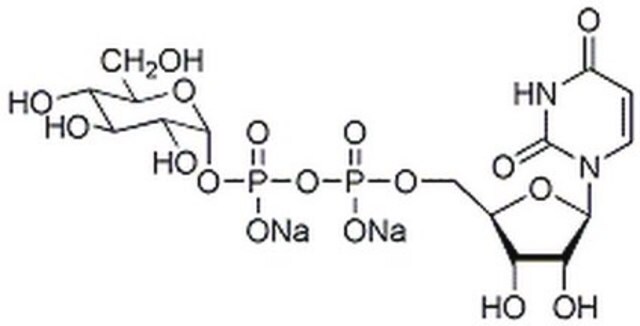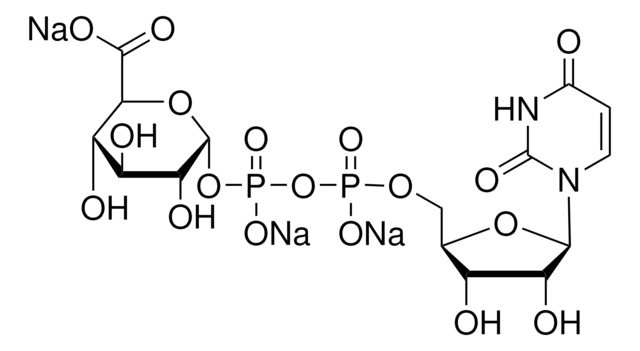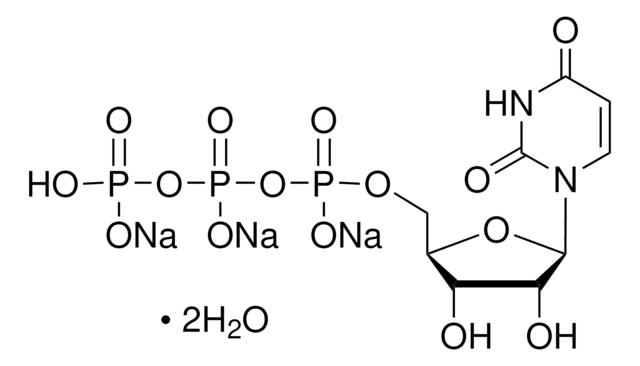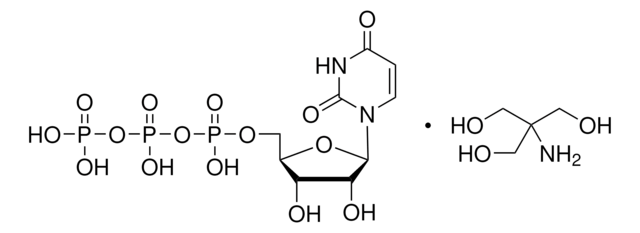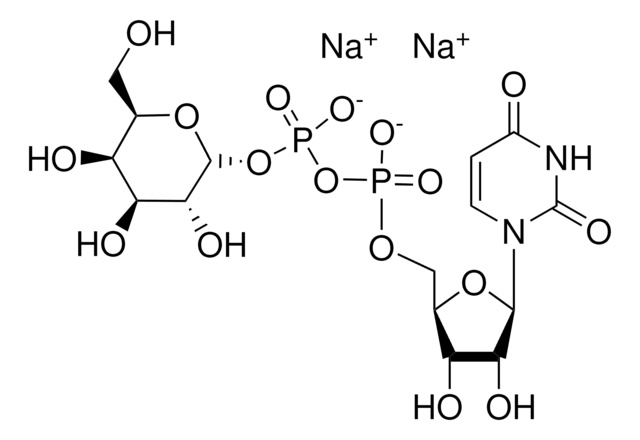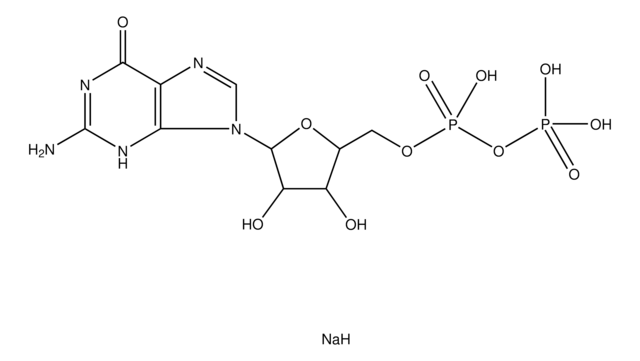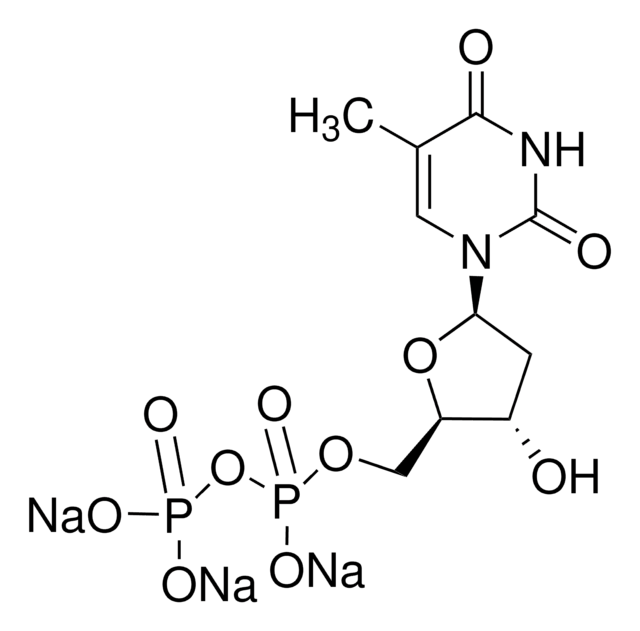94330
Uridine 5′-diphosphate disodium salt hydrate
≥96.0% (HPLC)
Sinónimos:
UDP, 5′-UDP-Na2
About This Item
Productos recomendados
biological source
synthetic
Quality Level
assay
≥96.0% (HPLC)
form
powder
impurities
≤15% water
storage temp.
−20°C
SMILES string
[Na+].[Na+].[H]O[H].O[C@H]1[C@@H](O)[C@@H](O[C@@H]1COP([O-])(=O)OP(O)([O-])=O)N2C=CC(=O)NC2=O
InChI
1S/C9H14N2O12P2.2Na.H2O/c12-5-1-2-11(9(15)10-5)8-7(14)6(13)4(22-8)3-21-25(19,20)23-24(16,17)18;;;/h1-2,4,6-8,13-14H,3H2,(H,19,20)(H,10,12,15)(H2,16,17,18);;;1H2/q;2*+1;/p-2/t4-,6-,7-,8-;;;/m1.../s1
InChI key
RHBXRWOXLRCWIZ-LLWADOMFSA-L
Application
- as a standard for quantification of metabolite levels in murine tumor interstitial fluid by liquid chromatography-mass spectrometry (LC/MS)
- as a UDP standard for nucleotide analysis by liquid chromatography-high resolution mass spectrometry (LC-HRMS)
- to treat E6.5 retina explants in vitro, to study its effect on the entry and elongation of microglial cells into the embryonic quail retina
Biochem/physiol Actions
signalword
Warning
hcodes
Hazard Classifications
Eye Irrit. 2 - Skin Irrit. 2 - STOT SE 3
target_organs
Respiratory system
Storage Class
11 - Combustible Solids
wgk_germany
WGK 3
flash_point_f
Not applicable
flash_point_c
Not applicable
ppe
dust mask type N95 (US), Eyeshields, Gloves
Elija entre una de las versiones más recientes:
¿Ya tiene este producto?
Encuentre la documentación para los productos que ha comprado recientemente en la Biblioteca de documentos.
Los clientes también vieron
Nuestro equipo de científicos tiene experiencia en todas las áreas de investigación: Ciencias de la vida, Ciencia de los materiales, Síntesis química, Cromatografía, Analítica y muchas otras.
Póngase en contacto con el Servicio técnico

